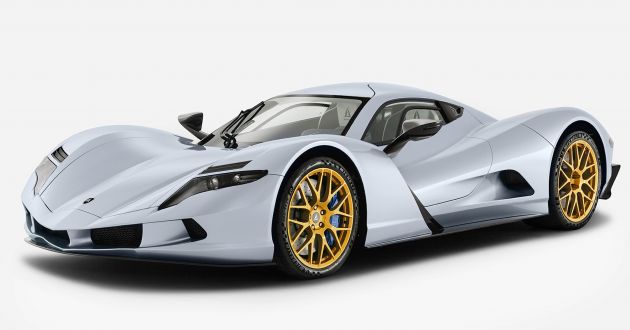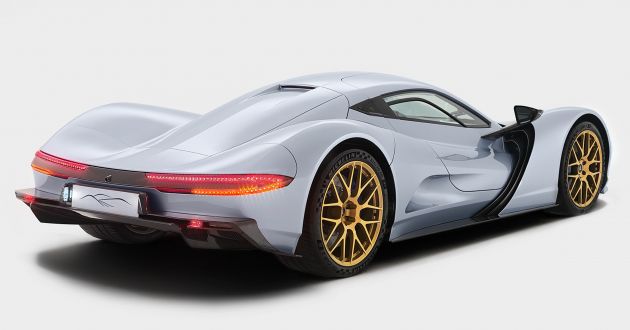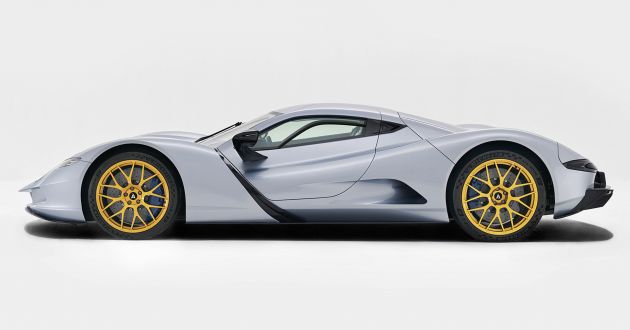This is the Aspark Owl, and it is Japan’s first all-electric hypercar that recently made its debut at this year’s Dubai Motor Show. While the EV’s name might be a little curious, the performance is nothing to laugh at.
Touted as the world’s fastest accelerating car, the Owl will accelerate from a dead stop to 96 km/h (0-60 mph) in just 1.69 seconds. For context, the Bugatti Chiron takes 2.4 seconds to complete the same sprint, while Tesla’s upcoming second-generation Roadster needs 1.9 seconds. Meanwhile, getting from zero to 300 km/h takes 10.6 seconds, and the car will max out at 400 km/h.
To achieve this level of performance – with road-legal tyres – the EV features four electric motors that provide a total output of 2,012 PS (1,985 hp) and 2,000 Nm of torque. The car also comes with an all-wheel torque vectoring system and four drive modes, with an additional setting for when you want maximum acceleration.
Said motors run on an 800-volt electrical system, and draw power from a lithium-ion battery with a capacity of 64 kWh that provides a driving range of up to 450 km following NEDC regulations. When plugged into a charger with a 44 kW output, the battery is fully charged in just 40 minutes.
These powertrain components are mated to a carbon monocoque structure that weighs just 120 kg, with other aspects being double wishbone hydraulic suspension that allows drivers to adjust the ride height between 80 mm and 160 mm. For stopping power, there are carbon ceramic brake discs on all four corners, with 10-piston front and four-piston rear calipers.
Carbon-fibre is also used for the car’s body, which weighs in at just 180 kg, and covers a rather large footprint with a length of 4,791 mm and width of 1,935 mm. The wheelbase spans 2,750 mm, and if you think the car looks a little too low, that’s because it is only 993 mm tall.
Other noteworthy aspects of the exterior include a deployable rear wing and cameras in place of conventional side mirrors. The unique shape is dedicated to minimising drag, and there are various active aerodynamic highlights for efficient air flow.
Despite the lightweight chassis and body, the dry weight of the Owl is actually 1,900 kg due to the powertrain, battery and some of the creature comforts that are fitted to it. For instance, you get a reverse camera, an infotainment system, a climate control system, four interior display screens, ambient lighting and keyless system.
There isn’t much practicality to speak of, as the luggage capacity is just 50 litres, but you’ll be able to bring a friend along as there’s two seats available, and the flamboyant butterfly doors should attract plenty of attention.
The Owl will be produced in Turin, Italy in collaboration with Manifattura Automobili Torino, with just 50 units planned. If you want one, it’ll cost you 2.9 million euro (RM13,275,520), with an initial deposit of 50,000 euro (RM228,919).
Source: Read Full Article



